HOME • V
O R T E X 1 • V
O R T E X 2 • V
O R T E X 3 • V
O R T E X 4 • V
O R T E X 5 •
P E R S O N A
L B L O G

 |
| Online
papers / Journal Articles Paul Gough 'The Tyranny of Seeing' : Peter Howson Bosnian War Artist Art Review, November 1994 Technically, the Artistic Records Committee of the Imperial War Museum was right to reject Peter Howson’s Croatian and Muslim for its permanent collection. The Museum insists on eye-witness accounts from its commissioned artist, and the now notorious rape paintings falls outside this narrow, but vital, definition. The tensions between making a factual, impartial record of war, and attempting something more interpretive, may account for the number of distinguished illustrators (among them Ardizzone, Ravilious, Bawden, Ken Howard, Linda Kitson) commissioned by the Museum within the last eighty years. Rightly or wrongly, ‘illustration’ suggests a neutral report, shorn of critical subjectivity. The principle that authenticity is vouchsafed by the presence of the artist as eye-witness harks back to when curators made crude but necessary distinctions between images of war recorded by artist in the field and work, however inspired, which was ruled ineligible for purchase by the acerbic comments, “He was never there”. The sacrosanct supremacy of the eye witness finally settled all the fuss over John Keane’s memorable Gulf War canvas of Mickey Mouse on what looks like a toilet next to a shopping-trolley full of anti-tank missiles – an image so shocking to the Disney Corporation as to incite a suit for breach of copyright. John Keane, eschewing sketchbooks and pencils, had videotape and photographic evidence of this weird sight which meant that he could ‘prove’ that the objects were arranged together, and that all he did was ‘report’ the incident as a powerful symbol. Within the letter of his contract he was right, and the Directors of the Imperial War Museum stood by their man. In our telematic and multi-sensory age, sketchbook and pencil seems to have no part in modern war. Keane spent weeks cataloguing his 62 rolls, editing hours of videotape, and reviewing news footage, immersing himself in the spirit of war, before starting in his studio. Howson, for all his sledgehammer style, faced with grotesque brutality in Bosnia, was rendered inoperable by the casualness of it all. “I can’t draw that,” he whispered to a television crew standing yards away from a mess of bloodstained tarmac – a scene made more appalling by the apparent pleasantness of the green landscape around them. The future dilemma for the War Museum is to know whether or not an artist can claim that is was enough to know that such scenes of desecration took place. Linda Kitson arrived in the Falklands long after the fighting, much of which happened sporadically and under cover of nightfall. Her bracing ink drawings capture the sordid aftermath of battle, equally valid as war art but a disappointment to those who wanted something more trenchant. “They might be better”, observed one disappointed officer, “when she has time to colour them in”. John 'Ted' Baker and Ray Evans served in the 8th Survey Regiment and both saw action in the North African and Italian campaigns. In civilian life they worked respectively as a junior draughtsmen and trainee architect and were thus ideal recruits for survey work. They also proved to be adept at drawing military panoramas, though according to Ted Baker this was an unusual skill, rare in either the Survey Regiment or the Artillery. Neither soldier was taught the skills specific to making a useful military panorama. Evans received only minimal instruction in freehand drawing during his six month initial training at Larkhill, achieving little more than the briefest description of a landscape. In fact, perhaps the most effective, certainly the most widely available, drawing course taken by many soldiers was the famous correspondence course run by Percy V Bradshawe's Press Art School, operating from Forest Hill in South London. The course had also been popular in the Great War. 'I have over 1000 pupils in the Army', Bradshawe claimed in The Studio in May 1918, 'Drawing is a Military Utility, a happy hobby, or a lucrative career according to your ability and viewpoint.' (36) Twenty years on, Ray Evans was one soldier who had been assiduously following the postal course; another was the watercolourist Colin Newman who was serving as a cartographic draughtsman with the Royal Engineers. Like Evans, he too went on to become a successful professional artist after the war. Perhaps the controversy over the verity of Howson’s rape painting has little to do with art at all. The furore over what has not been witnessed uncomfortably echoes the United Nation’s dilemma over its avowed neutrality and its passive policing role. As with their artists, the soldiers are warned to be inscrutable onlookers rather than compassionate interlopers. back |